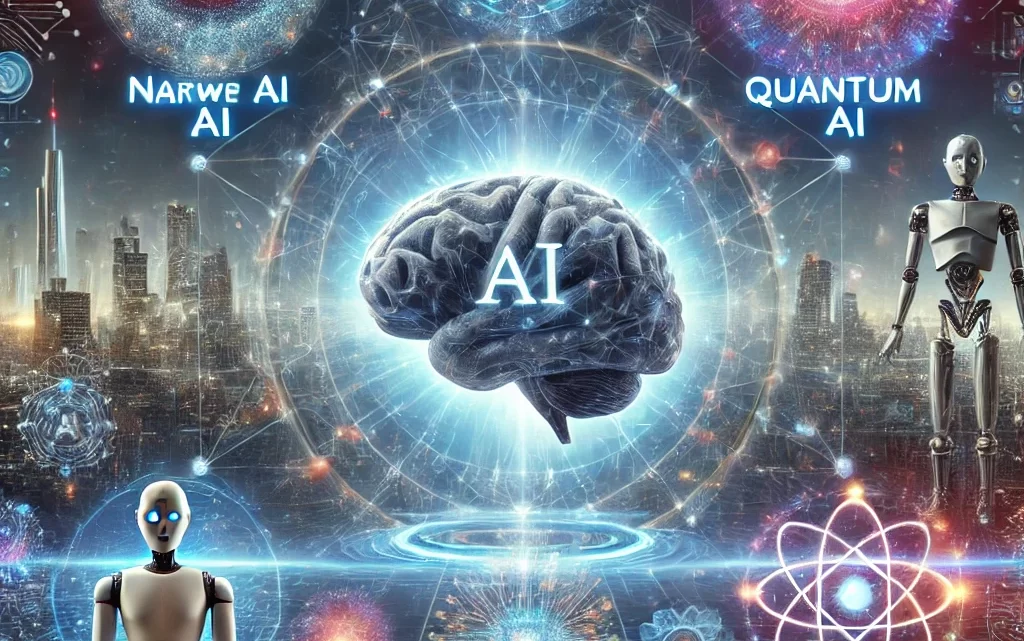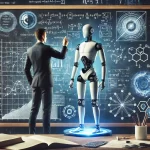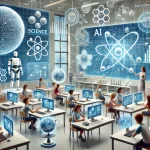
The Future of AI: How It Will Evolve and Potential AI Types
March 27, 2025Artificial Intelligence (AI) is advancing at an unprecedented pace, reshaping industries, revolutionizing problem-solving, and enhancing human capabilities. From self-learning systems to AI-human collaboration, the future of AI will be shaped by key technological breakthroughs. This blog explores how AI will evolve and the different AI types that could emerge in the coming decades.
How AI Will Evolve
1. Increased Autonomy
AI is progressing beyond automation and recommendation systems toward self-learning and decision-making with minimal human intervention. Future AI will manage complex processes, such as fully autonomous robots, self-driving fleets, and AI-driven research labs.
2. Enhanced Reasoning & Understanding
Next-generation AI will develop a deeper understanding of causality, allowing it to reason abstractly and make better context-aware decisions. Explainable AI (XAI) will be essential for trust and transparency, ensuring AI models can justify their conclusions.
3. Improved Generalization
Future AI models will be more adaptable, transferring knowledge across domains. For instance, an AI trained for medical diagnostics may apply its reasoning to environmental science. Advances in self-supervised learning and reduced dependency on large datasets will drive this shift.
4. Neurosymbolic AI (Hybrid AI)
By combining deep learning with symbolic reasoning, hybrid AI will enhance explainability and problem-solving. This approach mimics human-like logical thinking and will be instrumental in creating AI that can work with limited data and complex rules.
5. Quantum AI
Quantum computing will dramatically accelerate AI processing, enabling breakthroughs in optimization, cryptographic security, and complex problem-solving. AI-powered by quantum computing will unlock new frontiers in drug discovery, materials science, and climate modeling.
6. AI-Human Collaboration
AI will function as an intelligent co-pilot, assisting humans in decision-making, creativity, and research rather than replacing them. From AI-enhanced education to AI-driven scientific discovery, human-AI partnerships will reshape industries.
7. Embodied AI & Robotics
AI will increasingly have a physical presence, from humanoid robots to soft robotics and AI-powered prosthetics. Advanced robots will seamlessly integrate into daily life, performing tasks that require dexterity and adaptability.
8. Ethical & Regulatory Developments
As AI becomes more powerful, robust ethical frameworks and regulations will ensure fairness, privacy, and accountability. AI governance will play a crucial role in preventing biases and misuse while fostering responsible innovation.
Future AI Types
1. Narrow AI (ANI) – The Present State
Current AI systems specialize in specific tasks, such as language processing (ChatGPT), facial recognition, and self-driving cars. While highly capable, they lack the ability to generalize across domains.
2. Artificial General Intelligence (AGI) – Human-Level AI
AGI would possess human-like intelligence, capable of reasoning, learning, and adapting to new situations without task-specific training. While AGI remains theoretical, it is a major goal of AI research.
3. Artificial Superintelligence (ASI) – Beyond Human Intelligence
ASI refers to an AI that surpasses human intelligence in every aspect, including creativity, reasoning, and problem-solving. While ASI could drive rapid scientific breakthroughs, it also poses potential existential risks.
4. Quantum AI
AI powered by quantum computing will revolutionize fields requiring vast computational power, such as protein folding, climate modeling, and financial predictions. Quantum AI will be significantly faster than classical AI.
5. Neurosymbolic AI
This hybrid approach combines deep learning (pattern recognition) with symbolic reasoning (logic-based AI) to create AI systems that can both learn and reason effectively. Neurosymbolic AI will improve explainability and decision-making in critical applications.
6. AI-Augmented Humans (Brain-Computer Interfaces)
Advancements in brain-computer interfaces (BCIs) will allow direct communication between AI and the human brain. AI-augmented cognition could enhance memory, problem-solving, and even create new forms of human-computer interaction.
7. Self-Evolving AI
AI that autonomously improves itself without human intervention will lead to more adaptive and innovative systems. These AI models could optimize their own algorithms and generate new capabilities.
8. Emotional AI & Artificial Consciousness
Emotional AI will interpret and respond to human emotions, enabling more natural and empathetic interactions. Some researchers speculate that AI could eventually achieve artificial consciousness, though this remains highly theoretical.
Final Thoughts
The future of AI will be shaped by a combination of technical breakthroughs, ethical considerations, and human collaboration. While AGI and ASI remain long-term possibilities, hybrid AI, quantum AI, and AI-augmented humans are more immediate frontiers. Whether AI serves as a tool, a collaborator, or something beyond human intelligence depends on how society guides its evolution.


















